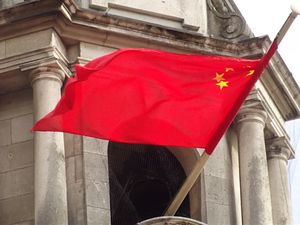Trans-Pacific View author Mercy Kuo regularly engages subject-matter experts, policy practitioners and strategic thinkers across the globe for their diverse insights into the U.S. Asia policy. This conversation with Carl Hayward — General Manager and Director of Communications, European Union Chamber of Commerce in Beijing — is the 107th in “The Trans-Pacific View Insight Series.”
What is the European Chamber’s view on China Manufacturing 2025 and its potential impact on European companies?
In the near term, the China Manufacturing 2025 (CM2025) initiative presents some significant opportunities for European business to play a role in the upgrading of China’s industrial base by providing services, products and key components that China isn’t currently able to produce itself. While European companies will have to carefully consider the possibility of longer-term market closure if China is able to reduce the technological gap, it doesn’t necessarily mean that these opportunities should be overlooked.
However, the plan contains inherent contradictions, which increase uncertainty for foreign companies operating in China. While the State Council’s original CM2025 announcement highlights the importance of allowing market forces to play the “decisive role” in the economy — in line with the Third Plenum’s Decision — much of the plan actually emphasizes the role of the state, by putting industrial policy ahead of market forces and cherry picking ten industries to form the spine of China’s industrial development. There are other issues that are causing concern among foreign companies, too. For example, poor enforcement of intellectual property rights (IPR) and requirements for forced technology transfers in exchange for near-term market access constitute major investment barriers. The European Chamber continues to call for market forces to play the decisive role and firmly believes that further opening up free trade, aligning with international norms and standards, and providing reciprocal treatment for foreign investment will bring the most benefits to the Chinese economy in the long run.
Assess the security implications of Chinese requirements for foreign companies to transfer technology to local partners.
IPR (intellectual property rights) protection has become an increasingly significant concern for foreign companies doing business in China. In the past, this was less of a problem, due in large part to the significant innovation gap that existed between foreign and Chinese companies. However, as China has successfully narrowed this gap in some areas, so the level of concern has been raised. One clear example is in the field of new energy vehicles (NEVs). Foreign automotive manufacturers producing NEVs in China are required to do so through a joint venture (JV) with a local partner. As part of the CM2025 initiative there is a requirement that these JVs demonstrate that they have mastered all of the core technologies involved in manufacturing NEVs. In order to participate in the market, foreign companies are therefore in a position where they can expect to see many of the benefits of their own R&D transferred to their JV partner, who may also be a future competitor. At the same time, the domestic JV partner can hold its own technological capacities credited to the JV without actually having to expose them to its foreign partner.
Explain the European Chamber’s perspective on U.S. Trade Representative (USTR) Robert Lighthizer’s investigation of Chinese technology transfer under Section 301 of the Trade Act of 1974.
It is not possible to say what the United States’ overall objective is by resurrecting Section 301. However, the immediate effect has been to bring the issue of forced technology transfers in China to the fore, which is an important issue for many foreign companies invested in China, including European companies.
Perceived slow progress from China on opening and reform may create political pressure in different countries. The European Chamber has previously warned about this. However, if the positive signals sent in such documents as State Council Document No. 5 and State Council Document No. 39 can be translated into concrete action, tensions over trade and investment will be reduced.
What are potential consequences of the USTR’s investigation on U.S. and European businesses in China?
Although this action has drawn international attention and generated a lot of column inches, with the term “trade war” being used, ultimately it is likely to result in deeper U.S.-China negotiations in the area of IPR protection, as well as market access, which appears to be the U.S.’s broader concern.
These are also major concerns of European companies invested in China, and are core components of the ongoing EU-China Comprehensive Agreement on Investment (CAI) negotiations, so a positive outcome for the U.S. could lead to a positive outcome for Europe.
The investigation also indicates that China will not be able to maintain its current market access restrictions while continuing to enjoy open access to foreign markets indefinitely. This move by the Trump administration is taking place at the same time that some in the EU are calling for the introduction of a form of screening mechanism for investments that are motivated by other countries’ industrial policies.
What diplomatic options exist to address the unfairness of China’s technology transfer regime?
Continued lobbying efforts by groups like the European Chamber and its members are one important avenue for addressing issues like technology transfers. For this reason, it is crucial that we maintain an ongoing dialogue with the Chinese authorities at all levels.
In addition to working to address disputes through the WTO, negotiations for a bilateral EU-China CAI and a U.S.-China Bilateral Investment Treaty also provide important opportunities to address this and other concerns resulting from China’s industrial policies. The European Chamber hopes that an ambitious CAI with a strong market-opening component can be completed as soon as possible, preferably within the next 12 months.

































